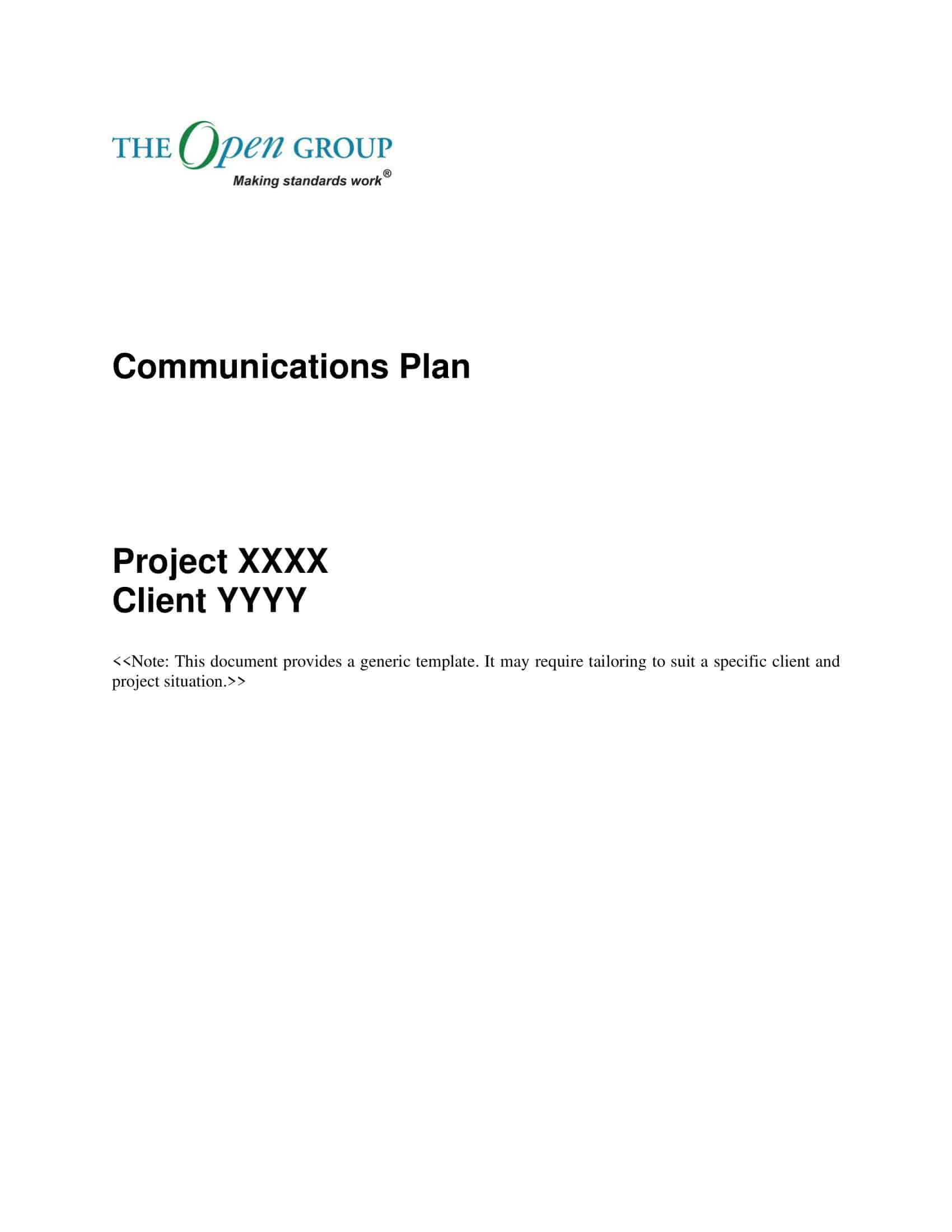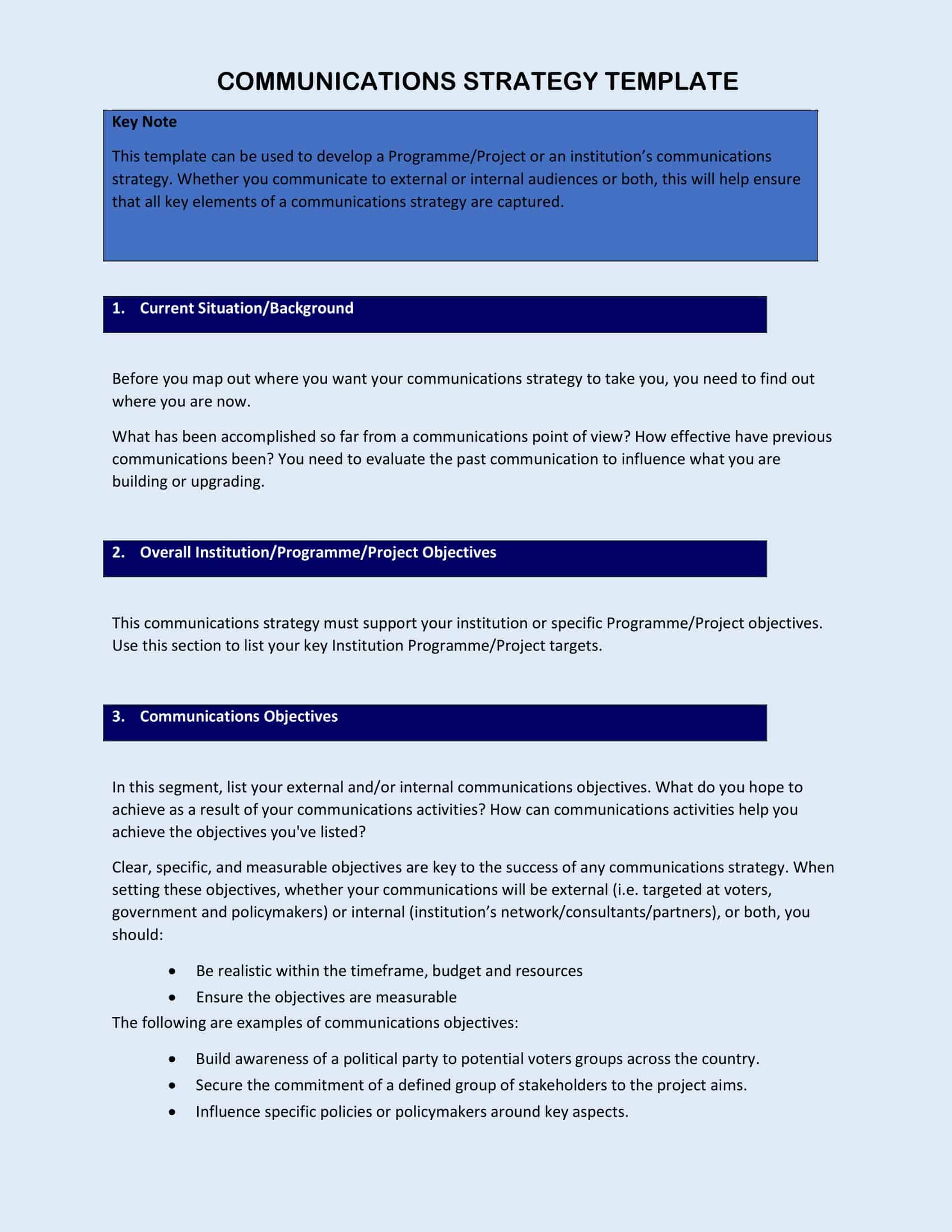A communication plan is a crucial element of any project, event, or organization. It outlines the strategies and methods for effectively communicating with stakeholders, including employees, customers, partners, and the public. By developing a clear and comprehensive communication plan, organizations can ensure that all parties are informed, engaged, and on the same page.
The plan includes the goals and objectives of the communication, the target audience, the channels of communication, and the frequency and timing of communication. A well-designed communication plan helps to promote transparency, build trust, and enhance relationships, ultimately leading to greater success in achieving the goals of the organization.
Table of Contents
Communication Plan Templates
Communication Plan Templates are pre-designed formats that assist individuals, teams, or organizations in developing a comprehensive and strategic approach to communication. These templates provide a structured framework for planning, organizing, and implementing effective communication strategies and tactics. Communication Plan Templates ensure consistency, clarity, and alignment in conveying information, managing stakeholders, and achieving communication objectives.
Communication Plan Templates provide a structured and strategic approach to effective communication. By utilizing these templates, individuals or organizations can ensure that their communication efforts are well-planned, targeted, and aligned with their goals and objectives. These templates facilitate consistency, coordination, and transparency in delivering messages, engaging stakeholders, and achieving desired outcomes. They serve as valuable tools for planning, implementing, and evaluating communication strategies, enabling effective communication management and fostering positive relationships with the intended audience.
Importance of Communication Plan

The importance of a communication plan lies in its ability to facilitate effective and efficient communication between an organization and its stakeholders. A communication plan serves as a blueprint for ensuring that all parties are informed and involved in the process, reducing confusion and misunderstandings.
A well-designed communication plan helps to:
Clarify goals and objectives: By outlining the objectives of communication, a communication plan helps to keep everyone focused and working towards the same end goal.
Reach the target audience: A communication plan helps to identify the target audience and the best ways to reach them, ensuring that the message is delivered effectively.
Promote transparency: A communication plan helps to build transparency and trust between the organization and its stakeholders, by providing clear and consistent information.
Enhance relationships: By providing regular and meaningful communication, a communication plan helps to enhance relationships between the organization and its stakeholders, fostering a sense of community and shared purpose.
Streamline processes: A communication plan helps to streamline communication processes and eliminate redundancies, reducing waste and improving efficiency.
What should a communication plan include?
A communication plan should include the following elements:
Goals and Objectives: Outline the objectives of the communication, including what information you want to convey, what actions you hope to inspire, and what outcomes you hope to achieve.
Target Audience: Identify the stakeholders who will receive the information and what their needs and interests are.
Channels of Communication: Determine the best methods for reaching the target audience, including face-to-face meetings, phone calls, emails, newsletters, social media, and other forms of digital and print communication.
Message: Develop a clear and concise message that will resonate with the target audience and achieve the goals of the communication.
Frequency and Timing: Determine how often and when the communication will take place, taking into account the target audience’s schedule, interests, and attention span.
Responsibilities: Assign roles and responsibilities for managing the communication, including who will develop the message, who will be responsible for distribution, and who will monitor the results.
Evaluation: Plan for evaluating the effectiveness of the communication plan and determining whether the goals and objectives were met.
Budget: Allocate resources, including time, money, and personnel, to ensure the communication plan can be executed effectively.
Types of communication plan
There are several types of communication plans, including:
Project Communication Plan: A project communication plan outlines the strategies and methods for communicating with stakeholders during the lifecycle of a project. It helps to ensure that everyone is informed and involved in the project, and that all objectives are met.
Crisis Communication Plan: A crisis communication plan outlines the strategies and methods for communicating with stakeholders during a crisis or emergency situation. It helps to ensure that all parties receive accurate and timely information, and that the organization’s reputation is protected.
Internal Communication Plan: An internal communication plan outlines the strategies and methods for communicating with employees, volunteers, or other internal stakeholders. It helps to ensure that everyone is informed and engaged, and that all objectives are met.
External Communication Plan: An external communication plan outlines the strategies and methods for communicating with customers, partners, or other external stakeholders. It helps to ensure that everyone is informed and engaged, and that all objectives are met.
Marketing Communication Plan: A marketing communication plan outlines the strategies and methods for communicating with customers and other target audiences to promote a product, service, or brand. It helps to ensure that the marketing message is delivered effectively and efficiently.
Stakeholder Communication Plan: A stakeholder communication plan outlines the strategies and methods for communicating with stakeholders to ensure that everyone is informed and involved in the process, and that all objectives are met.
How to make a communications plan
A well-designed communication plan is essential for ensuring that all parties are informed and engaged, and that all objectives are met. Here is a step-by-step guide to help you create an effective communication plan:
Define Your Goals and Objectives
Start by defining the objectives of your communication plan. What information do you want to convey? What actions do you hope to inspire? What outcomes do you hope to achieve?
Identify Your Target Audience
Next, identify the stakeholders who will receive the information, including customers, employees, partners, or other target groups. Consider what their needs and interests are, and how you can best reach them.
Choose Your Channels of Communication
Determine the best methods for reaching your target audience, including face-to-face meetings, phone calls, emails, newsletters, social media, and other forms of digital and print communication.
Develop Your Message
Create a clear and concise message that will resonate with your target audience and achieve the goals of your communication. Consider what information is most important, what benefits your audience will receive, and what motivates them to take action.
Determine Frequency and Timing
Decide how often and when the communication will take place, taking into account the target audience’s schedule, interests, and attention span.
Assign Responsibilities
Assign roles and responsibilities for managing the communication, including who will develop the message, who will be responsible for distribution, and who will monitor the results.
Plan for Evaluation
Develop a plan for evaluating the effectiveness of your communication plan and determining whether the goals and objectives were met.
Allocate Resources
Allocate resources, including time, money, and personnel, to ensure your communication plan can be executed effectively.
Implement and Monitor
Finally, implement your communication plan and monitor its progress. Make changes as needed to ensure that it is effective and efficient, and that all goals and objectives are met.
Example communication plan
Here is an example communication plan:
Goals and Objectives:
- Introduce a new product to the market
- Increase brand awareness among target audience
- Encourage product adoption and usage
Target Audience:
- Current customers
- Prospective customers
- Industry influencers
Channels of Communication:
- Email marketing
- Social media advertising
- Product demonstrations
- Influencer partnerships
Message:
- Highlight the benefits and unique features of the new product
- Emphasize the ease of use and value it brings to customers
- Showcase customer success stories
Frequency and Timing:
- Email marketing – bi-weekly for the first month, then monthly for 6 months
- Social media advertising – daily for the first week, then weekly for the first month
- Product demonstrations – scheduled on a monthly basis for the first 6 months
- Influencer partnerships – activated in the first month and ongoing for 6 months
Responsibilities:
- Product marketing manager responsible for message development and email marketing
- Social media manager responsible for social media advertising and influencer partnerships
- Sales team responsible for product demonstrations
Evaluation:
- Monitor email open and click-through rates
- Track social media engagement and conversions
- Assess the number of product demonstrations and customer feedback
- Measure influencer reach and impact
Resources:
- Budget allocated for email marketing and social media advertising
- Sales team resources for product demonstrations
- Influencer partnerships negotiated and managed by the social media manager
Implementation and Monitoring:
- Execute email marketing and social media advertising campaigns
- Schedule and conduct product demonstrations
- Foster influencer partnerships and monitor results
- Evaluate the effectiveness of the communication plan and make adjustments as necessary.
FAQs
Who is responsible for creating a Communication Plan?
The creation of a Communication Plan is typically the responsibility of the marketing or communications team, although it can involve input and collaboration from other departments as well.
How often should a Communication Plan be reviewed and updated?
A Communication Plan should be reviewed and updated regularly, at least once a year, or as needed based on changes in the business environment or communication objectives.
What are some common channels of communication in a Communication Plan?
Some common channels of communication in a Communication Plan include email marketing, social media advertising, product demonstrations, influencer partnerships, and events.
How do you evaluate the success of a Communication Plan?
The success of a Communication Plan can be evaluated by monitoring metrics such as email open and click-through rates, social media engagement and conversions, product demonstrations and customer feedback, and influencer reach and impact.
How do you prioritize which channels to use in a Communication Plan?
The channels to use in a Communication Plan should be based on the goals and objectives, target audience, and resources available. The best channels will vary based on the specific scenario, but generally, the most effective channels will be those that reach the target audience most effectively and efficiently.
Can a Communication Plan change over time?
Yes, a Communication Plan can and should change over time based on changes in the business environment, target audience, or communication objectives. The Communication Plan should be flexible enough to accommodate changes as needed.
How do you measure the impact of a Communication Plan?
The impact of a Communication Plan can be measured by monitoring metrics such as email open and click-through rates, social media engagement and conversions, product demonstrations and customer feedback, and influencer reach and impact. It’s important to regularly review these metrics and make adjustments to the Communication Plan as needed.
Can a Communication Plan be used for internal communication as well as external communication?
Yes, a Communication Plan can be used for both internal and external communication. The strategies, tactics, and channels may differ based on the type of communication, but the principles and overall process remain the same.

















































![Free Printable Roommate Agreement Templates [Word, PDF] 1 Roommate Agreement](https://www.typecalendar.com/wp-content/uploads/2023/06/Roommate-Agreement-150x150.jpg)
![Free Printable Credit Card Authorization Form Templates [PDF, Word, Excel] 2 Credit Card Authorization Form](https://www.typecalendar.com/wp-content/uploads/2023/06/Credit-Card-Authorization-Form-150x150.jpg)
![Free Printable Stock Ledger Templates [Excel,PDF, Word] 3 Stock Ledger](https://www.typecalendar.com/wp-content/uploads/2023/08/Stock-Ledger-150x150.jpg)
